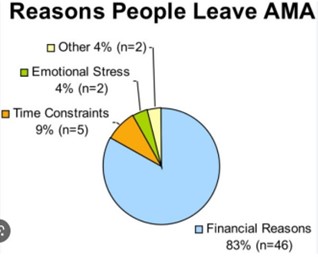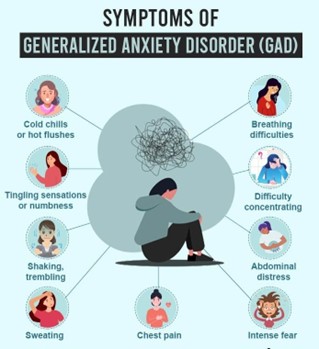A nurse Observes a client who has OCD repeatedly applying, removing, and then reapplying makeup. The nurse identifies that repetitive behavior in a client who has OCD is due to which of the following underlying reasons?
Select one:
Adverse effect of antidepressant medication
Attempt to reduce anxiety
Narcissistic behavior
Fear of rejection from staff
The Correct Answer is B
Repetitive behaviors in individuals with OCD are often compulsions that are performed in an attempt to reduce anxiety or distress. These compulsions can take many forms, including repetitive actions such as applying and removing makeup. By engaging in these behaviors, the individual may feel a temporary reduction in anxiety or distress.
Nursing Test Bank
Naxlex Comprehensive Predictor Exams
Related Questions
Correct Answer is A
Explanation
This response acknowledges the client's request for the forms while also addressing the need to discuss the client's decision to leave treatment. It provides an opportunity for the nurse to explore the client's reasons for wanting to leave, discuss the potential consequences of leaving against medical advice, and address any concerns or fears the client may have about continuing treatment.
Option b is not appropriate because it does not address the potential risks associated with leaving treatment against medical advice.
Option c is also not appropriate because it does not acknowledge the client's request and is potentially misleading.
Option d is not appropriate because it does not address the client's reasons for wanting to leave or the potential consequences of leaving against medical advice.

Correct Answer is B
Explanation
Generalized anxiety disorder (GAD) is a type of anxiety disorder characterized by excessive and persistent worry about a variety of different things, including health, work, relationships, and everyday situations. People with GAD may experience physical symptoms, such as fatigue, muscle tension, and restlessness.
Option a is not a typical finding associated with GAD. Sudden unexplained loss of vision may be a symptom
of a neurological or ophthalmologic condition, but not specifically related to GAD.
Option c describes a condition called body dysmorphic disorder (BDD), which is a type of obsessive- compulsive disorder characterized by an excessive preoccupation with a perceived physical flaw. BDD is not typically associated with GAD.
Option d does not describe a typical finding associated with GAD. While physical health issues can contribute to anxiety, the need for surgeries within the last three months is not necessarily indicative of GAD.
Therefore, the correct option is b. Constant worry about the undiagnosed presence of an illness for more than 6 months. People with GAD often worry about their health and the possibility of having an undiagnosed illness, even when there is no evidence of a problem. This worry may persist for six months or more and can interfere with daily life.

Whether you are a student looking to ace your exams or a practicing nurse seeking to enhance your expertise , our nursing education contents will empower you with the confidence and competence to make a difference in the lives of patients and become a respected leader in the healthcare field.
Visit Naxlex, invest in your future and unlock endless possibilities with our unparalleled nursing education contents today
Report Wrong Answer on the Current Question
Do you disagree with the answer? If yes, what is your expected answer? Explain.
Kindly be descriptive with the issue you are facing.
